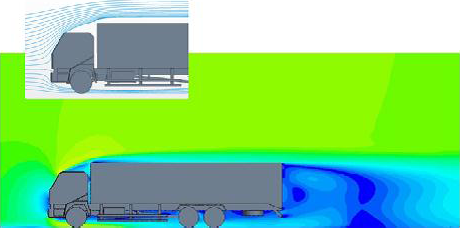Fuel economy and exhaust emission
Test methods
With regard to studies on fuel economy and exhaust emission test methods and testing equipment, JARI investigates the allowable error of the chassis dynamometers and other equipment used to simulate the realworld driving conditions in the laboratory and proposes various improvements for minimizing the error. Currently worldwide discussion is underway to develop globally common test methods for fuel economy and exhaust emissions. JARI is involved in the international discussion and study on driving cycles, measuring methods and testing equipment in order to contribute to the development of globally unified test methods on fuel economy and exhaust emissions.

Chassis dynamometer test (Wheel torque measurement)
JARI is also engaged in the on-road investigation of automotive emissions
and in the development of an onboard emissions analyzer system to
grasp the actual emission performances of vehicles in realworld use.
To reduce CO2 emissions, JARI tries to identify fuel economy deterioration
factors by analyzing fuel economy data obtained from actual driving.

Simulation of air resistance
2) Fuel and engine oil
Fuel and engine oil is another field of our research activity.
JARI investigates fuel properties analysis methods and test methods
for prospective future fuels and the effects of these new fuels on
exhaust emissions and fuel economy.
JARI conducts vehicle tests to assess the fuel economy improving
effects of various engine oils, and provides high-precision
fuel economy measurement techniques.
3) Low-carbon technology for diesel vehicles
For the elevation of diesel engine efficiency, JARI is engaged in basic studies on diesel combustion and injection in the engine with a view to offering the study outcomes for the building of a low-carbon society.

Analysis of diesel spray combustion
